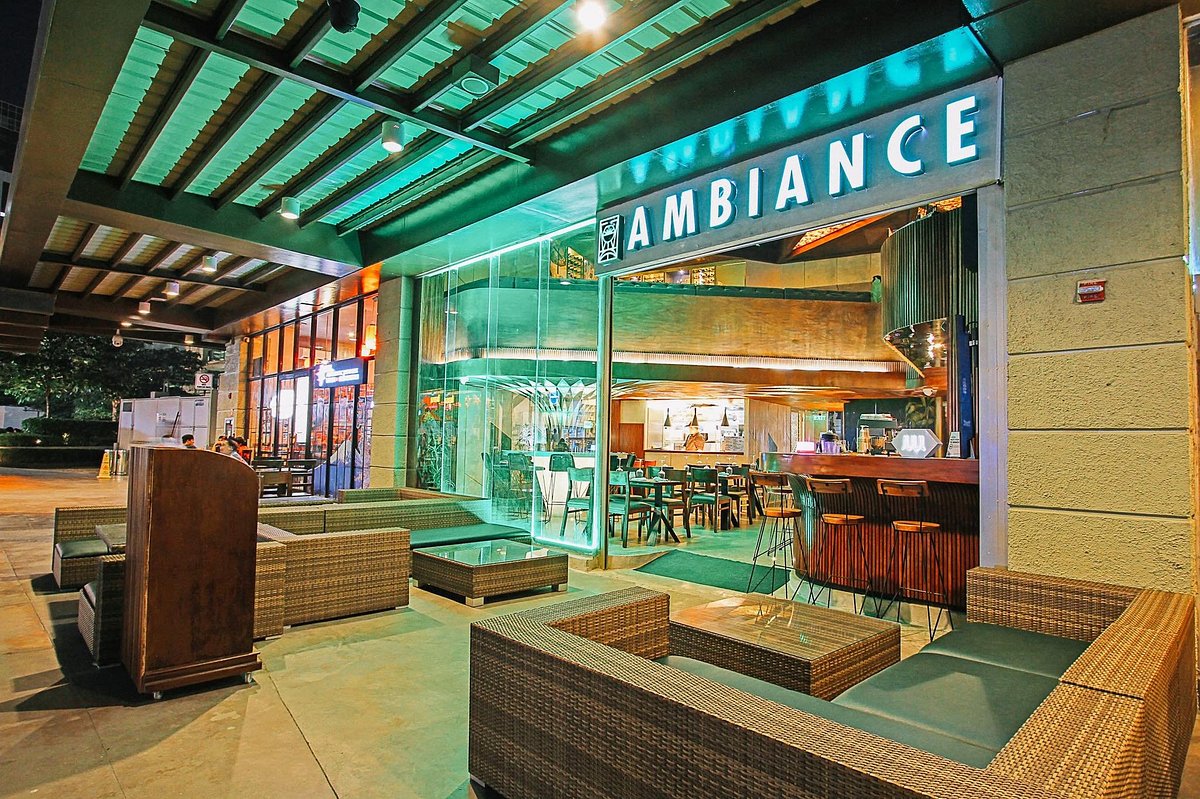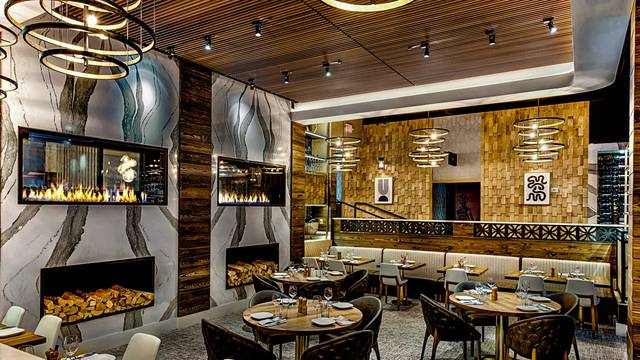Fine Dining Experience Islamabad: Indulge in Elegant Cooking Pleasures
Fine Dining Experience Islamabad: Indulge in Elegant Cooking Pleasures
Blog Article
Savor Genuine Asian Cuisine With a Pan-Asian Spin for a Cooking Journey
Starting a culinary journey through genuine Oriental food, improved with a Pan-Asian spin, provides a special chance to discover the rich tapestry of tastes that specify the area's diverse cooking customs. This experience welcomes you to appreciate the splendid equilibrium of tastes-- wonderful, salted, spicy, and sour-- balanced by aromatic herbs and spices. Picture the cutting-edge combination of Thai curry and ramen or the unforeseen pleasure of sushi burritos. As you ponder these tempting recipes, take into consideration the social narratives and historical impacts that form them, each bite providing a tale waiting to be discovered.

Checking Out Pan-Asian Tastes
In the world of global gastronomy, Pan-Asian cuisine stands apart for its impressive diversity and the harmonious interplay of tastes from different Asian societies. This cooking method commemorates the rich customs and one-of-a-kind ingredients found throughout the continent, developing a tapestry of preferences that is both interesting and gratifying. Trick to Pan-Asian cuisine is its capacity to balance contrasting tastes-- pleasant, salty, spicy, and sour-- while highlighting the freshness and quality of each active ingredient.
From the umami-rich soy sauce of Japan to the intense chili peppers of Thailand, Pan-Asian cuisine uses a comprehensive scheme of tastes. These elements are often integrated in inventive methods, improving dishes with layers of complexity. For instance, the use of aromatic herbs such as lemongrass and cilantro, usual in Vietnamese and Thai cuisine, adds a rejuvenating illumination to recipes, while the incorporation of coconut milk delivers a velvety, rich texture.
The emphasis on fresh produce and fragrant flavors makes certain that each dish is not just a banquet for the taste however likewise for the detects. Pan-Asian food invites diners to get started on a cooking journey, checking out the vast and varied landscapes of Asian gastronomy with every bite.
Combination Dishes to Try
While Pan-Asian food is celebrated for its traditional tastes, the modern cooking landscape is significantly welcoming combination recipes that mix these timeless elements with influences from various other areas. This ingenious approach not just honors the rich heritage of Asian cookeries yet also presents unique preference experiences that appeal to contemporary palates.
An archetype of such a blend meal is the Korean-Mexican taco, where marinaded bulgogi beef is covered in a warm tortilla, covered with kimchi and a hot gochujang-infused salsa. This combination marries the bold, mouthwatering tastes of Korea with the dynamic, fresh components of Mexican food. Similarly, sushi burritos have actually obtained popularity, integrating the delicate artistry of Japanese sushi with the hearty, hand-held ease of a burrito, typically including blend components like tempura shrimp and avocado with a drizzle of wasabi mayo.
Another notable recipe is Thai curry ramen, which instills the luscious, fragrant spices of Thai curry into the soothing broth of traditional Japanese ramen, producing an unified blend that entices the senses. These fusion dishes prolong past mere uniqueness; they stand for a cooking discussion between cultures, urging expedition and technology in the globe of Pan-Asian cuisine.
Important Components and Flavors
To really appreciate Pan-Asian cuisine, one must understand the crucial ingredients and seasonings that create its foundation. This varied culinary design attracts from a rich tapestry of Asian practices, using a harmonious blend of flavors and appearances. Trick ingredients consist of soy sauce, fish sauce, and oyster Recommended Reading sauce, which give a tasty umami depth important to Oriental recipes. Complementary to these are rice vinegar and mirin, offering a delicate acidity and sweetness.
Fragrant elements are crucial, with ginger, lemongrass, and garlic being common across various Pan-Asian dishes. These ingredients give a great smelling base that enhances the complexity of flavors. Flavors such as celebrity anise, cardamom, and cinnamon present heat and character, echoing influences from regions like China and India.

Cooking Methods and Tips
Mastering the art of Pan-Asian cuisine requires knowledge with its distinct cooking strategies, each adding to the dynamic tapestry of tastes this cooking tradition is commemorated for. Central to these techniques is the stir-fry, a quick cooking technique that maintains the nutritional stability and vivid colors of active ingredients. Making use of a wok, the stir-fry method enables for also warmth distribution, crucial for attaining the characteristic structure and flavor equilibrium of Pan-Asian meals.
One more basic strategy is steaming, specifically common in Chinese cuisine. This gentle method maintains the natural flavors and nutrients of active ingredients, making it excellent for seafood and vegetables. Dumplings, a precious staple, typically take advantage of steaming, leading to soft, delicious structures.
Barbecuing, likewise essential, passes on great smoky depths to recipes such as Korean bulgogi or Japanese yakitori (Instagrammable restaurants Islamabad). This method usually involves seasoning active blog ingredients, permitting flavors to pass through deeply prior to food preparation over an open fire or hot plate
Lastly, mastering the art of balancing tastes-- sweet, sour, salted, bitter, and umami-- is vital. Effectively layering these elements can raise a recipe from normal to amazing, providing a complicated and satisfying culinary experience that personifies the essence of Pan-Asian food.
Eating Experiences Worldwide
Across the world, Pan-Asian food offers an unmatched dining experience, celebrated for its abundant tapestry of flavors and vivid presentations. This cooking sensation has transcended social limits, capturing the hearts and palates of food enthusiasts worldwide. In cosmopolitan cities like New York, London, and Sydney, Pan-Asian dining establishments act as fusions where cooking practices from Thailand, Japan, China, and beyond converge, offering restaurants with an eclectic mix of meals that highlight the region's diversity.
The global appeal of Pan-Asian food depends on its ability to supply both authenticity and innovation. Chefs masterfully marry conventional active ingredients such as lemongrass, soy sauce, and miso with contemporary methods, leading to dishes that are both acquainted and refreshingly brand-new. This blend permits diners to begin on a cooking trip that appreciates heritage while welcoming modernity.
In site here addition, dining experiences are raised with thoughtfully made settings that show the principles of Pan-Asian visual appeals. From minimal Japanese-inspired insides to dynamic Thai-themed rooms, each dining establishment supplies an unique ambiance that matches the culinary offerings. Consequently, clients are not merely taking in a dish yet partaking in a cultural experience, making Pan-Asian eating a truly global phenomenon.
Final Thought
The expedition of Pan-Asian food uses a profound understanding of the detailed interaction of flavors and culinary traditions throughout Asia. By embracing combination meals such as Thai curry ramen and sushi burritos, the cooking trip not just highlights the flexibility of standard active ingredients yet additionally showcases ingenious modern-day strategies. This gastronomic experience, improved by important seasonings and cooking methods, supplies a special chance to appreciate the cultural diversity and cooking creativity that define Pan-Asian cuisine on a global scale.
Getting started on a cooking trip with authentic Oriental cuisine, boosted with a Pan-Asian twist, uses a distinct possibility to discover the abundant tapestry of flavors that specify the region's varied cooking traditions.In the world of international gastronomy, Pan-Asian food stands out for its impressive variety and the harmonious interplay of flavors from different Oriental societies. Key to Pan-Asian cuisine is its capability to balance different tastes-- sweet, salty, spicy, and sour-- while highlighting the freshness and top quality of each active ingredient.

Report this page